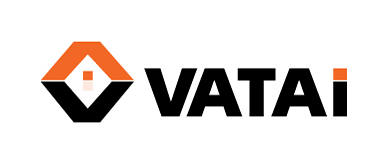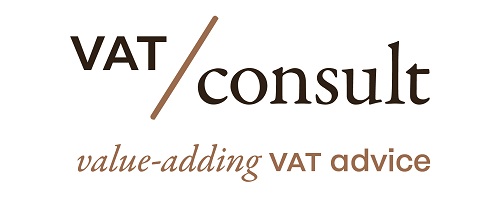On September 10, 2014, the ECJ issued its decision in the case C-92/13 (Gemeente ‘s-Hertogenbosch).
Context: Reference for a preliminary ruling — Sixth VAT Directive — Article 5(7)(a) — Taxable transactions — ‘Supplies made for consideration’ — First occupation by a municipal authority of premises built for it on land belonging to it — Activities engaged in as a public authority and as a taxable person
Article in the EU VAT Directive
Articles 5(7)(a), 17(5) of the Sixth VAT Directive (Article 18 and 173 of the EU VAT Directive 2006/112/EC).
Article 18
Member States may treat each of the following transactions as a supply of goods for consideration:
(a) the application by a taxable person for the purposes of his business of goods produced, constructed, extracted, processed, purchased or imported in the course of such business, where the VAT on such goods, had they been acquired from another taxable person, would not be wholly deductible;
(b) the application of goods by a taxable person for the purposes of a non-taxable area of activity, where the VAT on such goods became wholly or partly deductible upon their acquisition or upon their application in accordance with point (a);
(c) with the exception of the cases referred to in Article 19, the retention of goods by a taxable person, or by his successors, when he ceases to carry out a taxable economic activity, where the VAT on such goods became wholly or partly deductible upon their acquisition or upon their application in accordance with point (a).
Article 173
1. In the case of goods or services used by a taxable person both for transactions in respect of which VAT is deductible pursuant to Articles 168, 169 and 170, and for transactions in respect of which VAT is not deductible, only such proportion of the VAT as is attributable to the former transactions shall be deductible.
The deductible proportion shall be determined, in accordance with Articles 174 and 175, for all the transactions carried out by the taxable person.
2. Member States may take the following measures:
(a) authorise the taxable person to determine a proportion for each sector of his business, provided that separate accounts are kept for each sector;
(b) require the taxable person to determine a proportion for each sector of his business and to keep separate accounts for each sector;
(c) authorise or require the taxable person to make the deduction on the basis of the use made of all or part of the goods and services;
(d) authorise or require the taxable person to make the deduction in accordance with the rule laid down in the first subparagraph of paragraph 1, in respect of all goods and services used for all transactions referred to therein;
(e) provide that, where the VAT which is not deductible by the taxable person is insignificant, it is to be treated as nil.
Facts
- The Gemeente carries out transactions as a public authority and as a taxable person. With regard to the transactions which it carries out as a taxable person, some of these are subject to VAT, while others are exempt under Article 11 of the Wet OB.
- The Gemeente ordered the construction of a new office building on land belonging to it, work which began in the year 2000. It was envisaged that the Gemeente would use:
- 94% of the area of the building for its requirements as a public authority;
- 5% of that area for activities carried out by the Gemeente in its capacity as a taxable person, for supplies of services entitling it to deduct VAT;
- 1% of that area for activities carried out by the Gemeente in its capacity as a taxable person, for supplies of services not entitling it to deduct VAT.
- The building in question was first occupied by the Gemeente on 1 April 2003.
- The invoices relating to the construction of the building which were issued to the Gemeente in July 2002 included the amount of EUR 287 999 in respect of VAT. The tax return submitted by the Gemeente to the tax administration indicated an amount of EUR 32 in respect of VAT to be recovered.
- The tax administration accepted that tax return, but, subsequently, the Gemeente changed its position and requested a refund of the total amount of the input VAT paid. In support of its request, the Gemeente submitted that the building which had been constructed constituted a good produced in the course of its business, within the meaning of Article 3(1)(h) of the Wet OB, which corresponds to Article 5(7)(a) of the Sixth Directive.
- Following that challenge, the tax administration decided to increase the VAT refund in favour of the Gemeente to EUR 17 279, which corresponds to 6% of the amount of EUR 287 999 claimed in respect of paid input VAT.
- The Gemeente challenged that decision before the Gerechtshof te ’s‑Hertogenbosch (Regional Court of Appeal, ’s‑Hertogenbosch). That court found that the Gemeente had used the building at issue for its business purposes, within the meaning of Article 3(1)(h) of the Wet OB, but only in so far as those business purposes served the Gemeente’s activities in its capacity as a taxable person, that is to say, in the amount of 6% of the total use of the building, the remaining 94% corresponding to a use for the Gemeente’s activities as a public authority and, as such, covered by neither the Wet OB nor the Sixth Directive.
- The Gemeente brought an appeal in cassation against the judgment of the Gerechtshof te ’s‑Hertogenbosch before the Hoge Raad der Nederlanden (Supreme Court of the Netherlands). In its appeal, the Gemeente submits that the goods and services concerned were acquired with a view to subsequently engaging in an activity that was subject to VAT, namely having at its disposal, after the supply of the building and for the purposes of its business, goods produced ‘in-house’. Pursuant to Article 3(1)(h) of the Wet OB, read in conjunction with Article 11(1)(a)(1) of that law, that activity should be regarded as a supply which is subject to VAT.
- The referring court refers to the judgment in Gemeente Vlaardingen (C‑299/11, EU:C:2012:698), according to which Article 5(7)(a) of the Sixth Directive, which allows for certain transactions to be treated as supplies made for consideration, also applies to goods produced, constructed, extracted or processed by a third party with materials provided by the undertaking which has paid input VAT.
- However, the particular nature of the case in the main proceedings lies in the fact that, here, a third-party taxable person produced, on the instructions of the Gemeente, an item of immovable property of which the Gemeente uses 94% for its activities as a public authority. The referring court seeks to establish whether, despite the fact that local government authorities are not, in principle, liable to pay VAT, Article 5(7)(a) of the Sixth Directive, which confers the right to deduct input VAT, may none the less be applicable inasmuch as the Gemeente uses the building in part, albeit only to a limited extent, for supplies made in its capacity as a taxable person.
Questions
Should Article 5(7)(a) of the Sixth Directive be interpreted as meaning that supplies are made for consideration in a situation in which a municipality takes first occupation of a building which it has had built on its own land and which it is to use at the rate of 94% for its activities as a public authority and at the rate of 6% for its activities as a taxable person, including 1% for exempt activities to which no right of deduction applies?
AG Opinion
Article 5(7)(a) of Sixth Council Directive 77/388/EEC of 17 May 1977 on the harmonisation of the laws of the Member States relating to turnover taxes — Common system of value added tax: uniform basis of assessment should be interpreted as applying to a situation in which a municipality takes first occupation of a building which it has had built on its own land and which it is to use at the rate of 94% for its activities as a public authority and at the rate of 6% for its activities as a taxable person, including 1% for exempt activities to which no right of deduction applies.
Decision
Article 5(7)(a) of Sixth Council Directive 77/388/EEC of 17 May 1977 on the harmonisation of the laws of the Member States relating to turnover taxes — Common system of value added tax: uniform basis of assessment must be interpreted as applying to a situation, such as that at issue in the main proceedings, in which a municipality takes first occupation of a building which it has had built on its own land and of which it intends to use 94% of the area for its activities as a public authority and 6% of that area for its activities as a taxable person, including 1% for exempt activities in respect of which no right to deduct VAT exists. However, the subsequent use of the building for the activities of the municipality may give rise to a right to deduct the tax paid in respect of the application provided for by that provision only in the proportion corresponding to its use for the purposes of the taxable transactions, pursuant to Article 17(5) of that directive.
Personal comments/VATupdate
Source:
Similar ECJ cases
How did countries implement the case? Your feedback appreciated! Let us know
Newsletters















